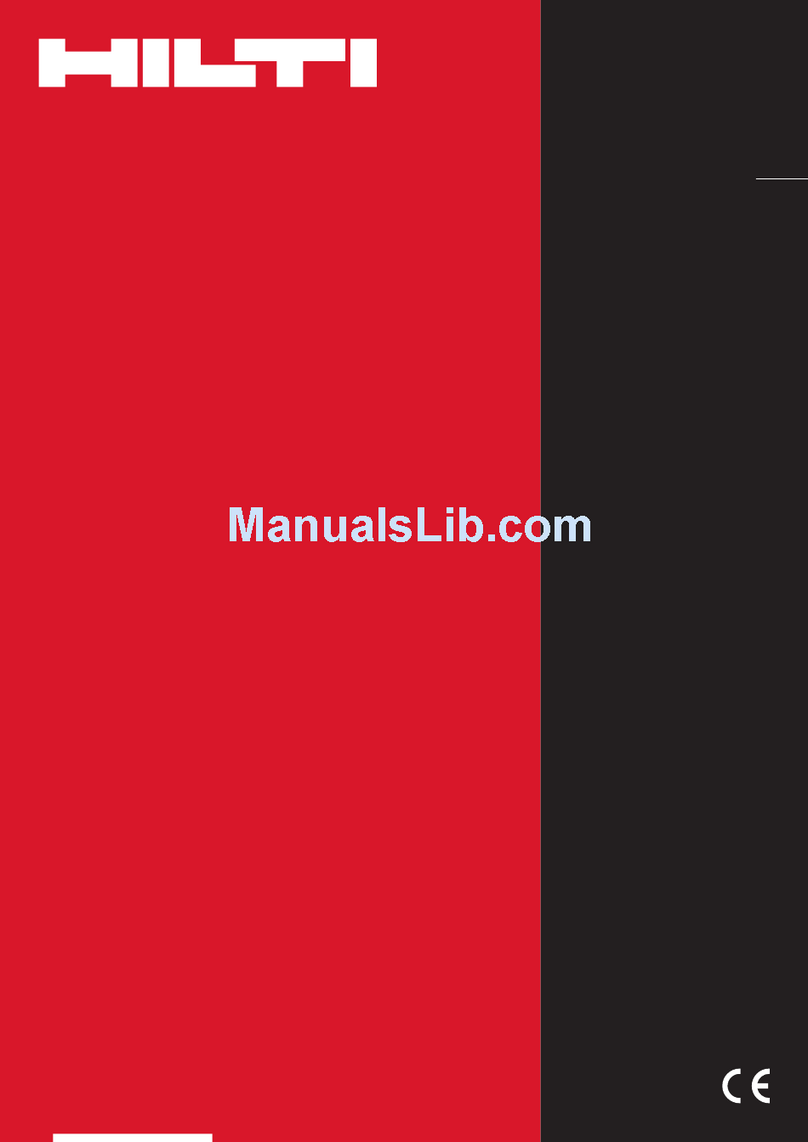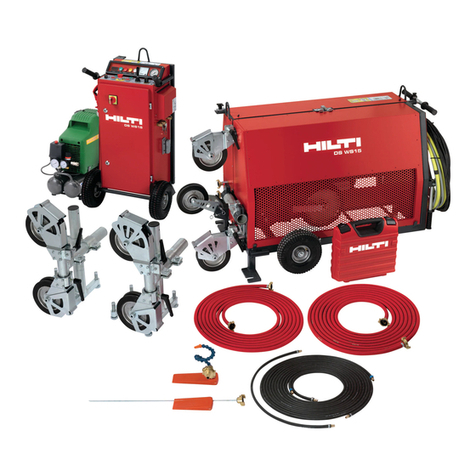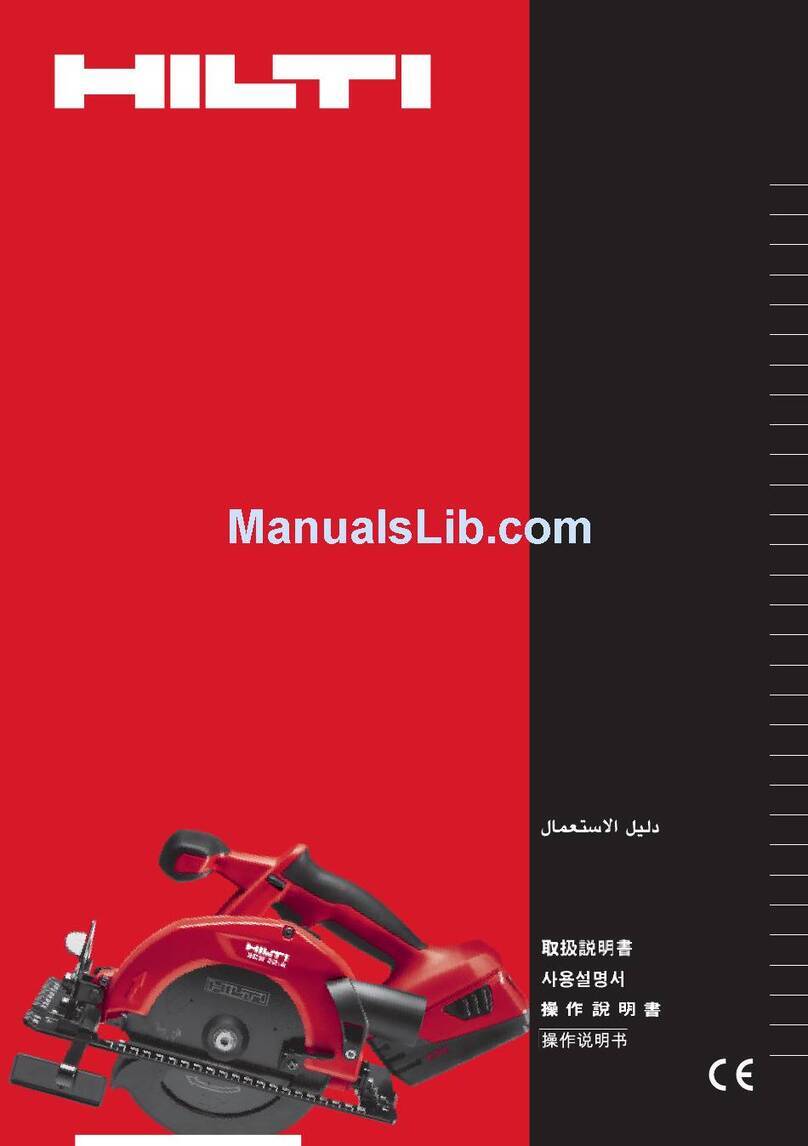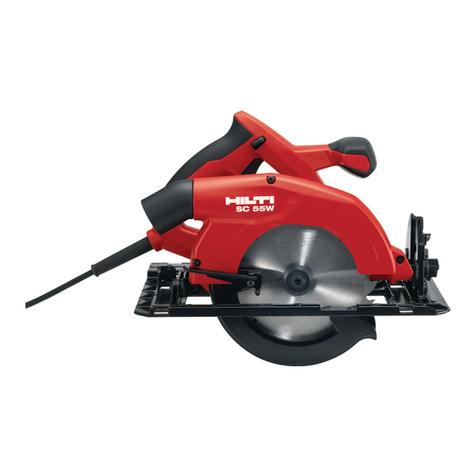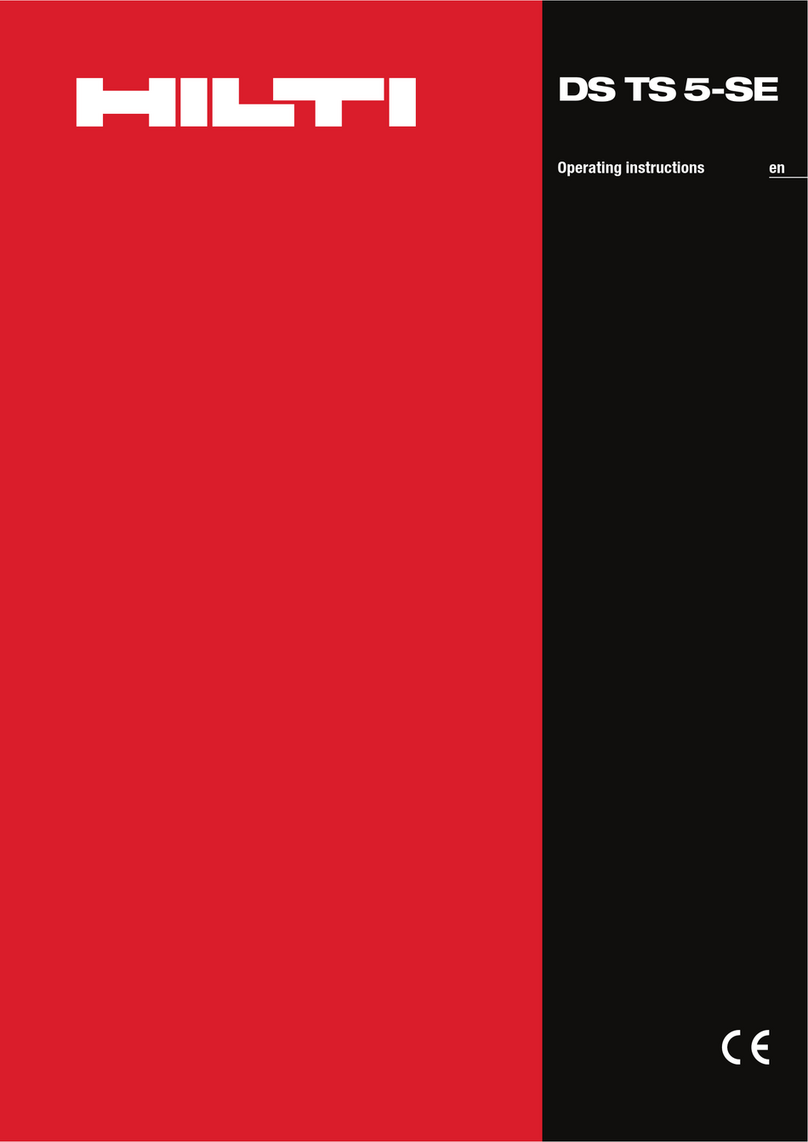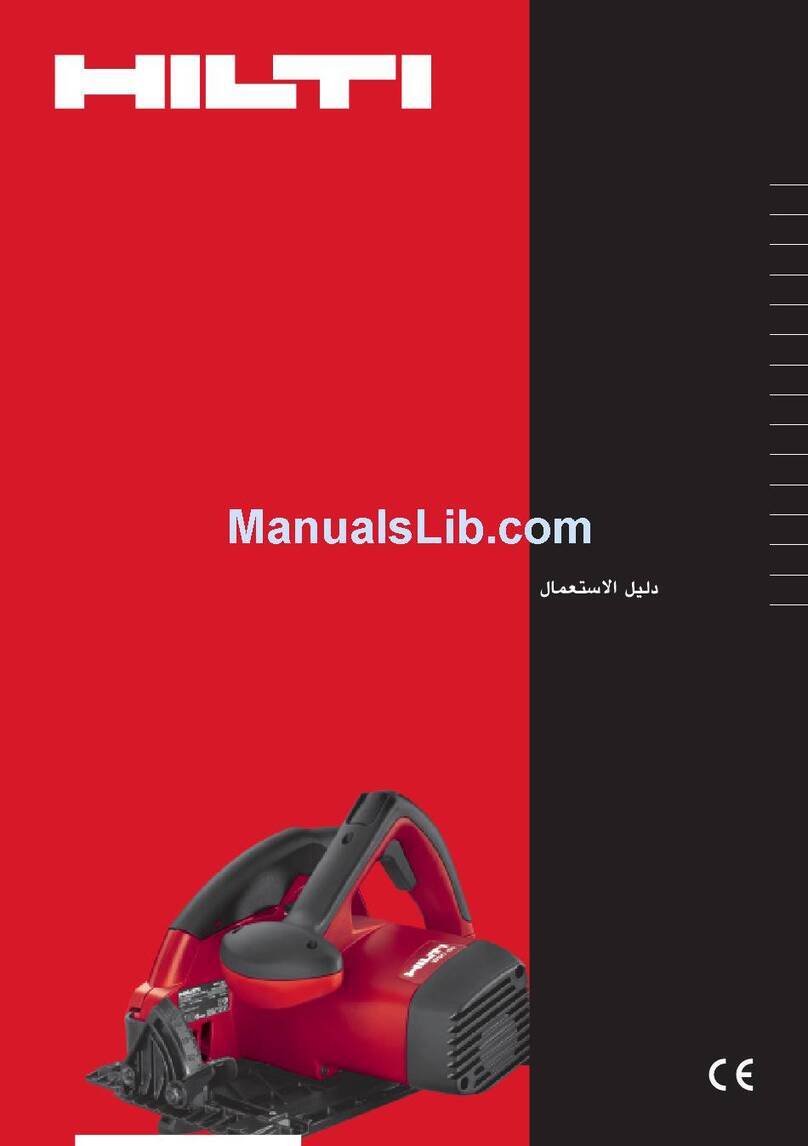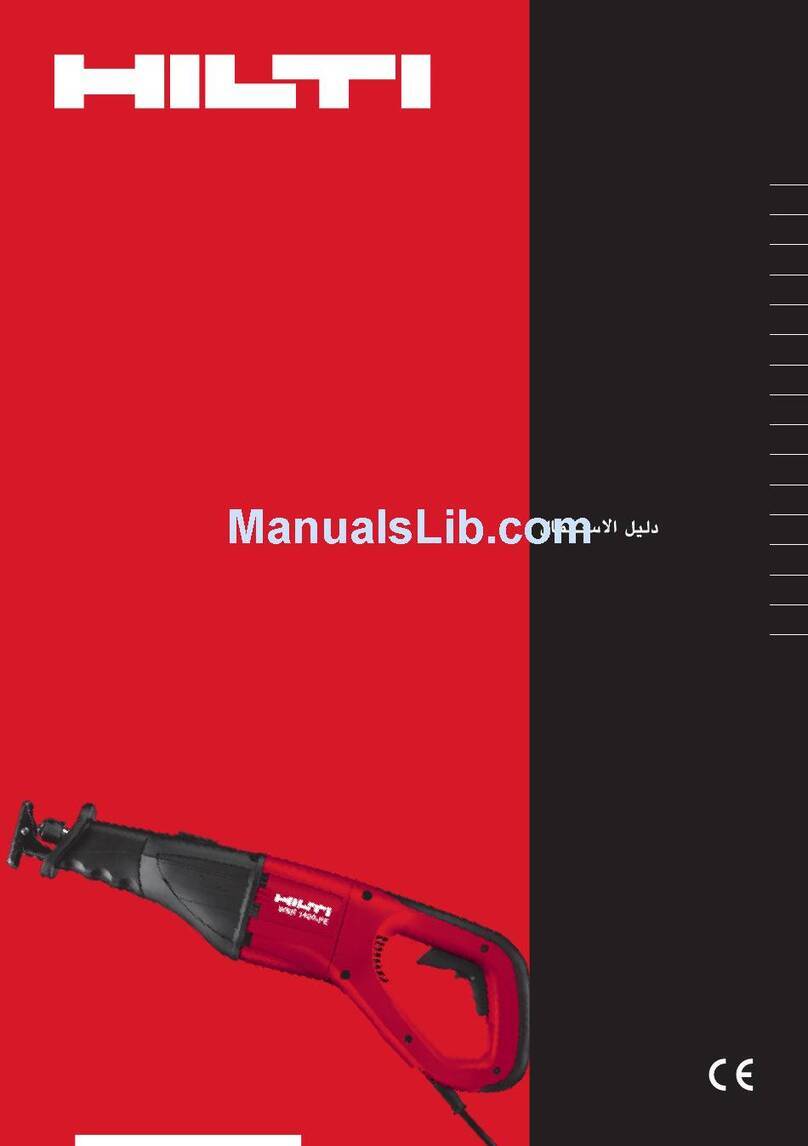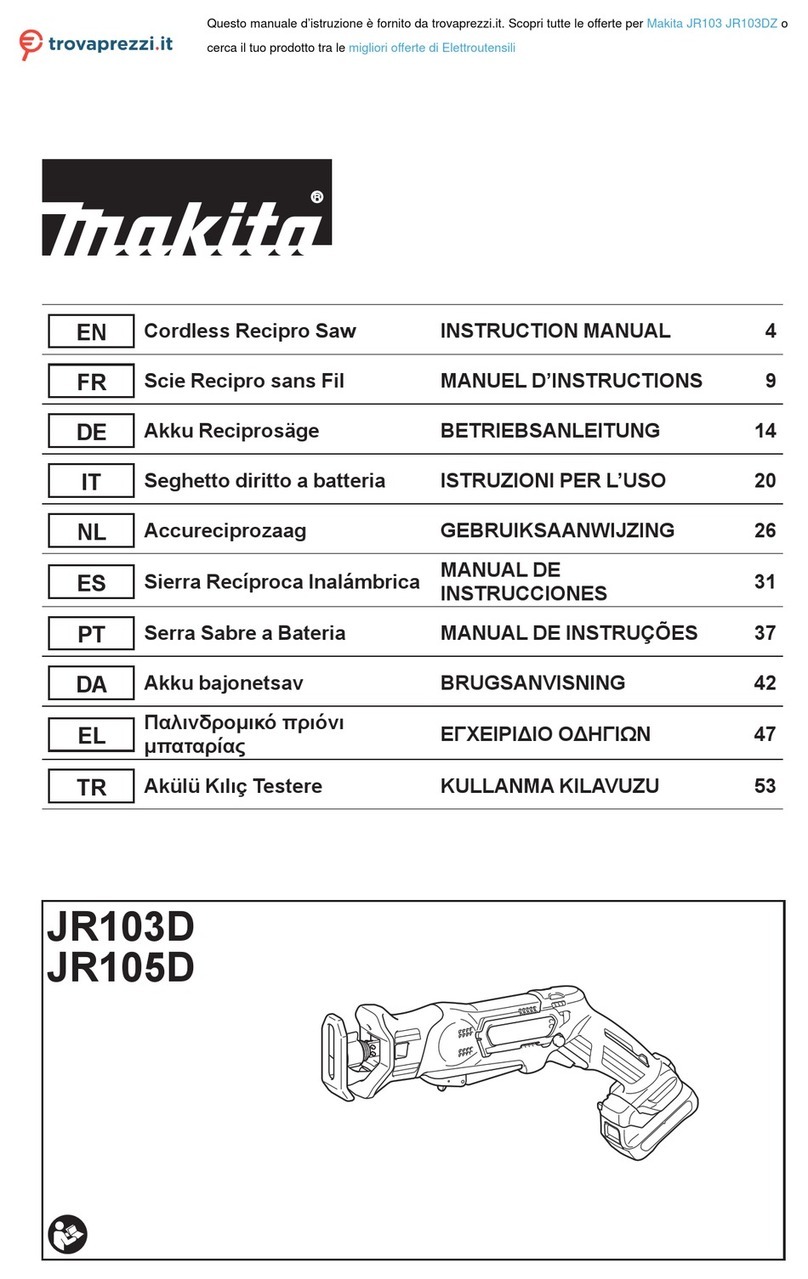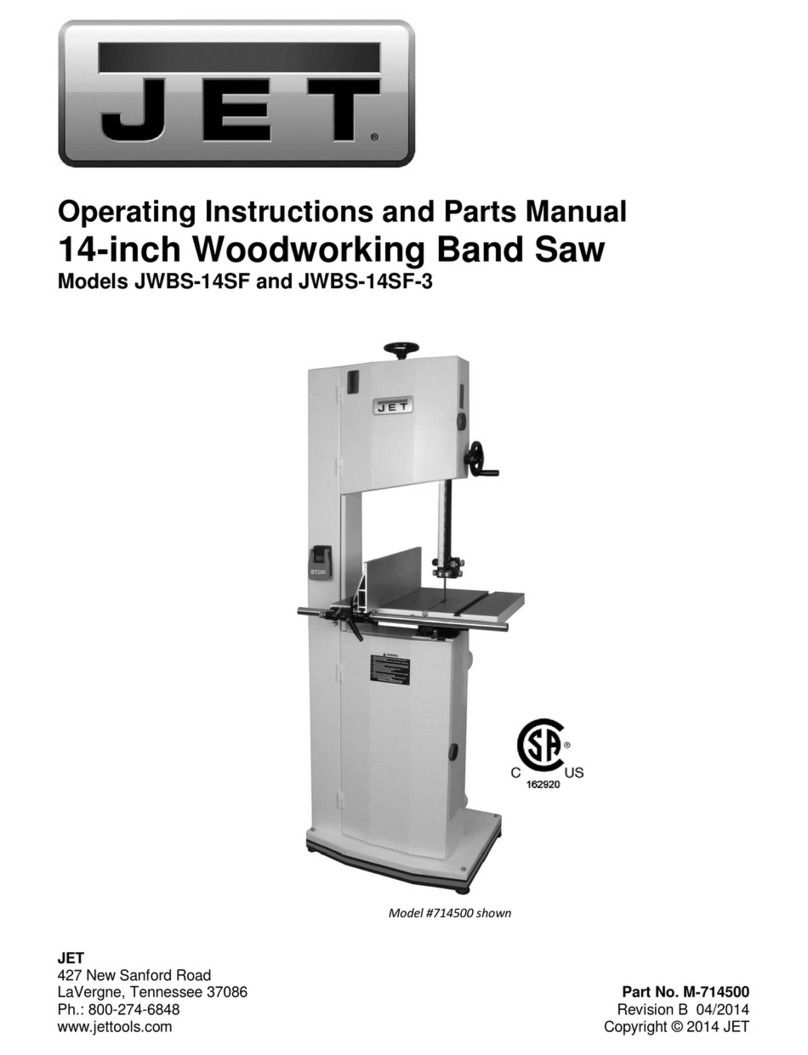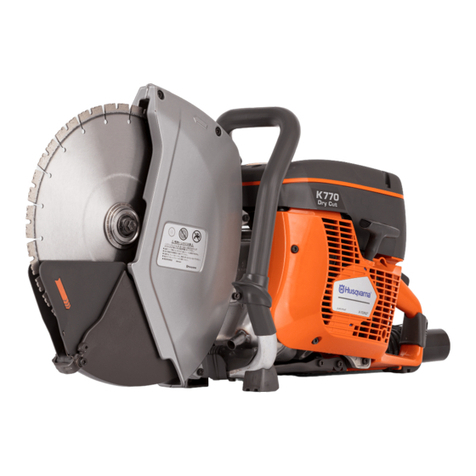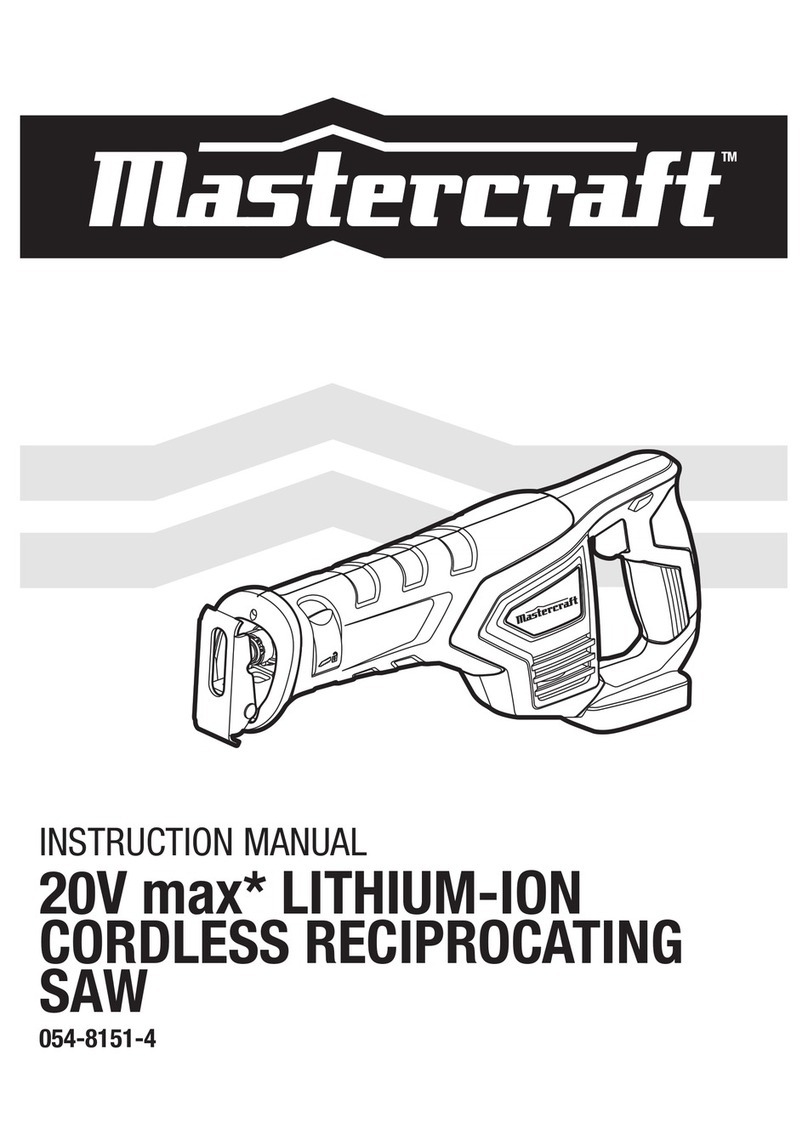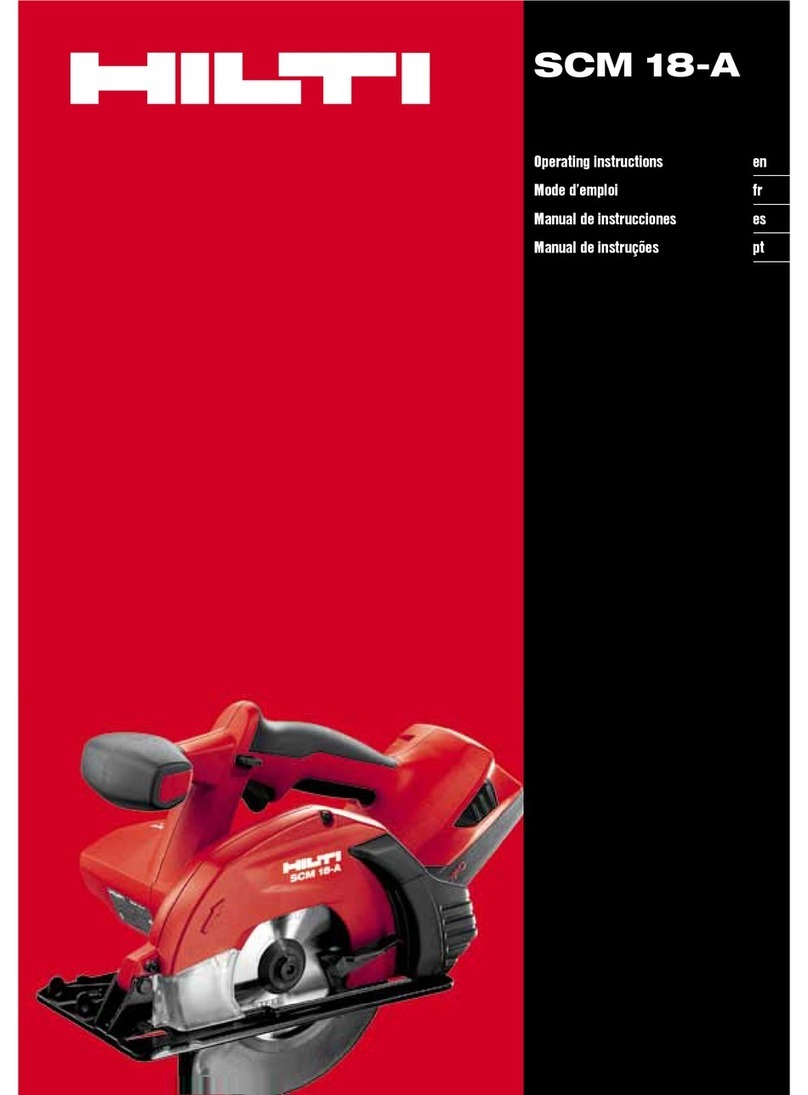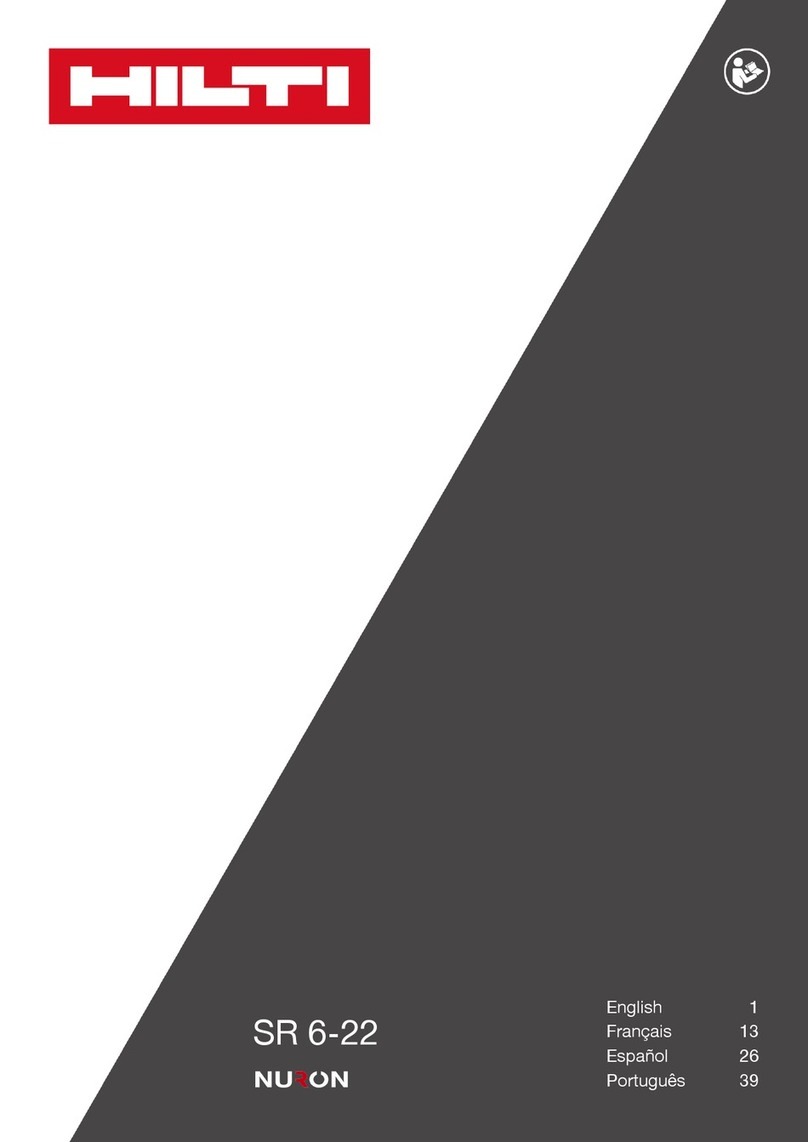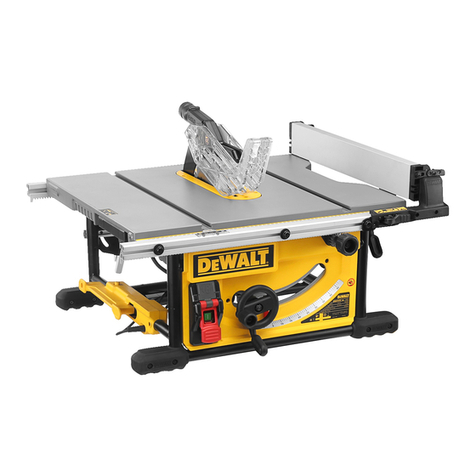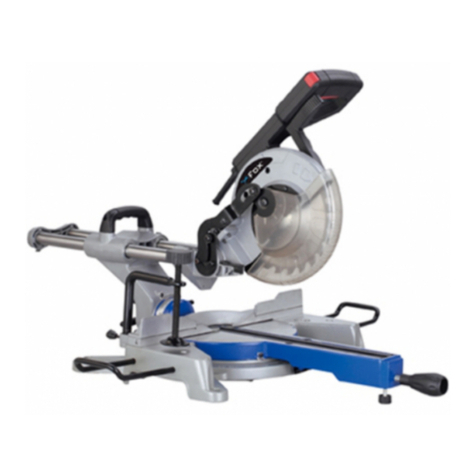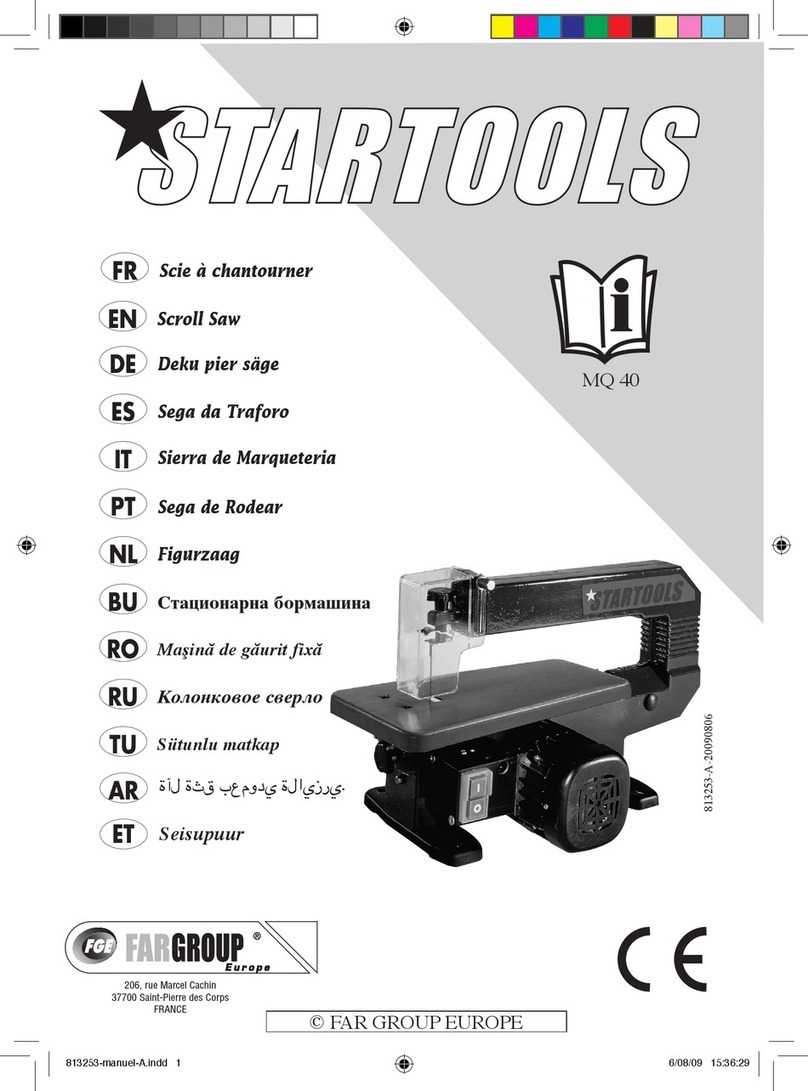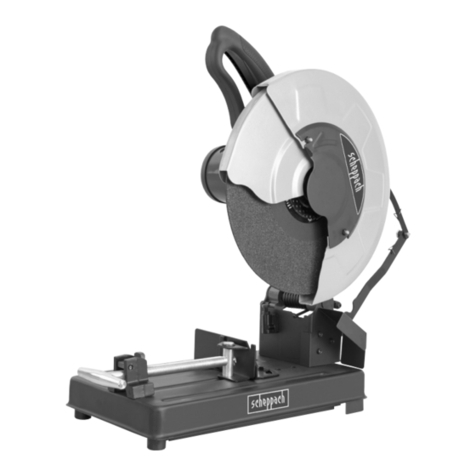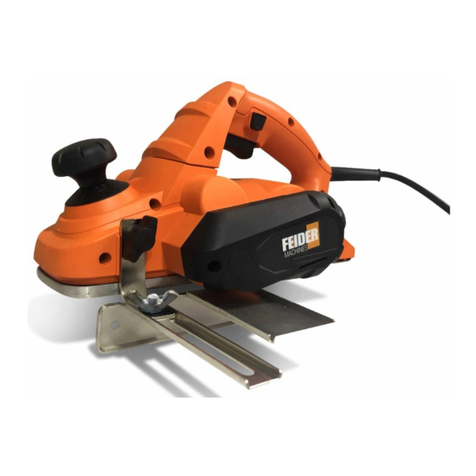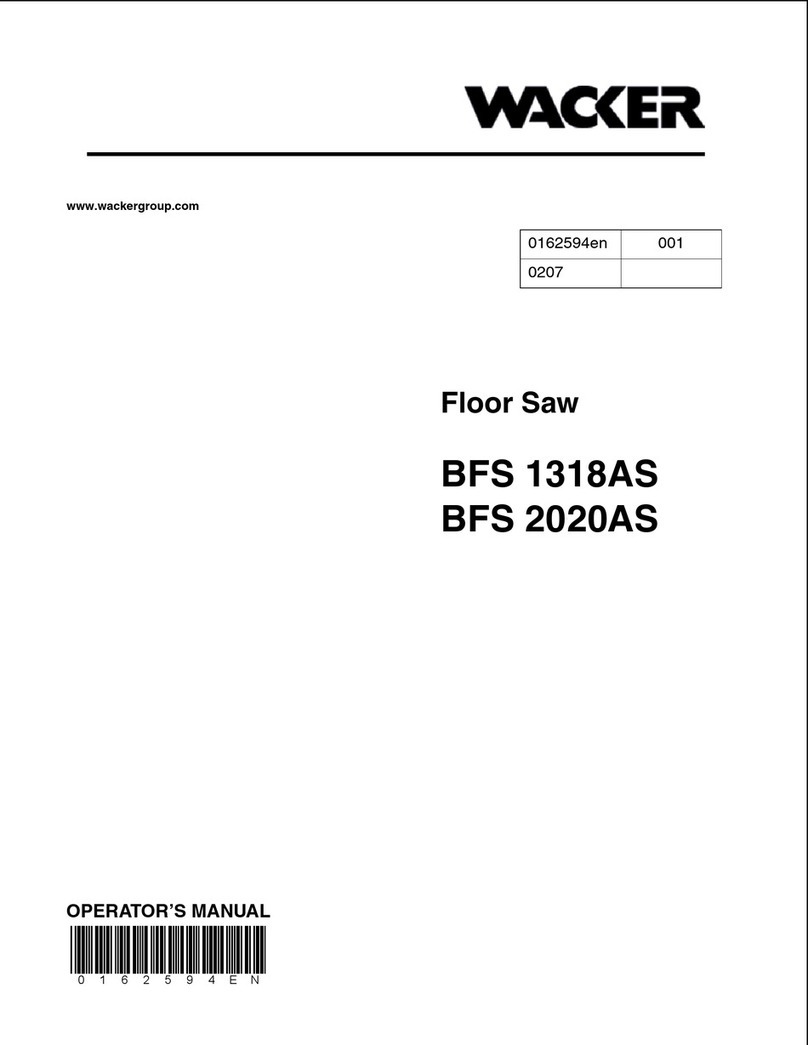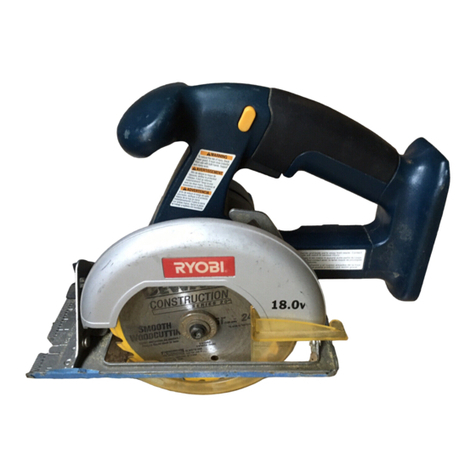
f) Keep cutting tools sharp and clean. Properly main-
tained cutting tools with sharp cutting edges are less
likely to bind and are easier to control.
g) Use the power tool, accessories and tool bits etc.
in accordance with these instructions, taking into
account the working conditions and the work to
be performed. Use of the power tool for opera-
tions different from those intended could result in a
hazardous situation.
5.1.5 Battery tool use and care
a) Recharge only with the charger specified by the
manufacturer. A charger that is suitable for one
type of battery pack may create a risk of fire when
used with another battery pack.
b) Use power tools only with specifically designated
battery packs. Use of any other battery packs may
create a risk of injury and fire.
c) When battery pack is not in use, keep it away
from other metal objects, like paper clips, coins,
keys, nails, screws or other small metal objects,
that can make a connection from one terminal to
another. Shorting the battery terminals together may
cause burns or a fire.
d) Under abusive conditions, liquid may be ejected
from the battery; avoid contact. If contact acci-
dentally occurs, flush with water. If liquid contacts
eyes, additionally seek medical help. Liquid ejec-
ted from the battery may cause irritation or burns.
5.1.6 Service
a) Have your power tool serviced bya qualified repair
person using only identical replacement parts.
This will ensure that the safety of the power tool is
maintained.
5.2 Additional safety instructions
5.2.1 Personal safety
a) Hold power tool by insulated gripping surfaces,
when performing an operation where the cutting
accessory may contact hidden wiring. Cutting ac-
cessory contacting a "live" wire may make exposed
metal parts of the power tool "live" and could give
the operator an electric shock.
b) Wear ear protectors. Exposure to noise can cause
hearing loss.
c) Use auxiliary handles, if supplied with the tool.
Loss of control can cause personal injury.
d) Always hold the power tool securely with both
hands on the grips provided. Keep the grips dry,
clean and free from oil and grease.
e) Breathing protection must be worn if the power
tool is used without a dust removal system for
work that creates dust.
f) Improve the blood circulation in your fingers by
relaxing your hands and exercising your fingers
during breaks between working.
g) Operate the power tool only as intended and when
it is in faultless condition.
h) Wear protective gloves when changing insert
tools as the insert tools get hot during use.
i) Switch the power tool on only after bringing it into
the working position.
j) Avoid unintentional starting. Never carry the
power tool with your finger on the on/off switch.
Remove the battery from the power tool during
work breaks, before carrying out maintenance,
before changing cutting tools and before
transporting the power tool.
k) Children must be instructed not to play with the
power tool.
l) The power tool is not intended for use by children,
by debilitated persons or those who have received
no instruction or training.
m) Dust from material such as paint containing lead,
some wood species, minerals and metal may be
harmful. Contact with or inhalation of the dust may
cause allergic reactions and/or respiratory diseases
to the operator or bystanders. Certain kinds of dust
are classified as carcinogenic such as oak and beech
dust especially in conjunction with additives for wood
conditioning (chromate, wood preservative). Material
containing asbestos must only be treated by special-
ists. Where the use of a dust extraction device is
possible it shall be used. To achieve a high level
of dust collection, use a suitable vacuum cleaner
of the type recommended by Hilti for wood dust
and/or mineral dust together with this tool. Ensure
that the workplace is well ventilated. The use of a
dust mask of filter class P2 is recommended. Fol-
low national requirements for the materials you
want to work with.
5.2.2 Power tool use and care
a) Secure the workpiece. Use clamps or a vice to
secure the workpiece. The workpiece is thus held
more securely than by hand and both hands remain
free to operate the power tool.
b) Check that the insert tools used are compatible
with the chuck system and that they are secured
in the chuck correctly.
5.2.3 Special safety instructions for reciprocating
saws
a) Always guide the power tool away from your body
when working with it.
b) Neverpositionyourhandsaheadoforonthesaw
blade.
c) Never cut into unknown materials and keep the
line of cut above and below the workpiece free of
obstacles. If the saw blade strikes an object it may
cause the power tool to kick back.
d) Apply moderate pressure and set the power tool
to a suitable stroke rate when using the pipe-
cutting adapter (accessory), especially when cut-
ting large-diameter pipes. This will help to prevent
the power tool overheating.
e) The power tool must be pressed against the work-
piece until the contact shoe makes firm contact.
This helps ensure maximum safety and good per-
formance.
f) Wear suitable protective clothing to protect you
from hot cuttings.
en
19
Printed: 08.07.2013 | Doc-Nr: PUB / 5071383 / 000 / 04






















